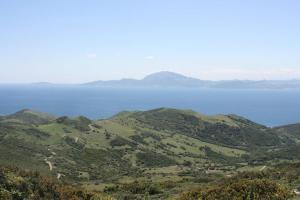Over the past 3 years the AQUACROSS Assessment Framework was developed, tested, and applied in eight case studies across Europe to solve local biodiversity challenges. Finally, results from each Case Study were published in a 30-page Case Study report and 3-page Executive Summary report.
The case study page summarises our work in Case Study 2, and makes recommendations for local policy.
| Find out more about Case Study Two: |
| Case Study Report |
| Executive Summary |
| Case Study Report Annexes |
| Case Study Report Annexes Case study data and information on the AQUACROSS Information Platform |
Results from Case Study 2 are summaried below:
Biodiversity challenge: The IBRM transboundary setting contains several remarkable protected sites, high biodiversity richness and an important cultural heritage. However, pressures from human activities in the area are threatening these distinct values. Our aim is to understand the social and ecological system of the Reserve to design a multifunctional Green and Blue Infrastructure network - with conservation, exploitation and restoration objectives - and implement Ecosystem-Based Management measures with a comprehensive focus on freshwater, coastal and marine realms.
Context: The study area encompasses the IBRM in Andalusia (Spain) – Morocco and its area of influence. The reserve spans over two continents, Europe and Africa, and the marine area of the Strait of Gibraltar, and includes river basins, coastal, and marine areas (UNESCO-MAB 2011). Economic activities in both the northern and southern sections of the case study area are based on agriculture, livestock, fisheries, and tourism, all of which are highly dependent on terrestrial and aquatic resources. The aquatic ecosystems provide a vital range of provisioning goods, and cultural, regulation and maintenance services for sustaining human well-being.
What was done? In collaboration with regional and local governments of Andalusia (Spain) and Kingdom of Morocco, we applied the AQUACROSS Assessment Framework to develop and design a multi-purpose Green and Blue Infrastructure. This included:
- Analysing regional activities, pressures, ecosystem condition, biodiversity, and key aquatic ecosystem services;
- Identifying stakeholder objectives: synergies, conflicts, and opportunities for improvement;
- Green and Blue Infrastructure design based on spatial conservation prioritisation and modelling of biodiversity features and ecosystem services;
- Identifying the best spatial allocation for an ecosystem-based management plan for the restoration of degraded ecosystems;
- Co-creation with local stakeholders: two rounds of workshops held in Tarifa (Spain, northern section) and Tangier (Morocco, southern section).
Results: Our study identified the key areas that allow conserving biodiversity, maintaining ecosystem services capacity, and restoring degraded ecosystems, while minimising costs. The results suggest that implementing ecosystem-based management restoration measures when designing Green and Blue Infrastructure may result in greater coverage, while improving connectivity across its core and conservation zones.
Lessons learned for managing biodiversity: Green and Blue Infrastructure combines in one single solution an ecosystem-based management outcome that balances conservation, restoration and exploitation objectives. The Green and Blue Infrastructure multi-zoning approach offers co-benefits in terms of ecosystem and biodiversity conservation as well as human well-being, while minimising the potential conflicts between conservation and exploitation goals.
Applicability: The CS2 framework may be also useful in guiding Green and Blue Infrastructure investment at regional level. It also supports its integration in different policies at EU level and international/global level, among them, the Biodiversity Strategies, National Marine Strategies, Coastal Management Plans, and National Plans for Watershed Management in both Spain and Morocco.


